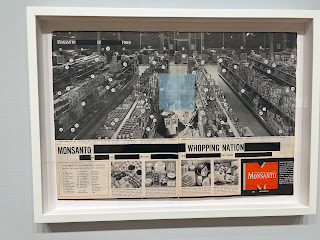The Hidden Truth About Man-Made Chemicals: Toxic Chemicals In the U.S

The Hidden Truth About Man-Made Chemicals: Toxic Chemicals In the U.S By: Kyanna Gonzalez In Kirsten Stolle’s exhibit titled Only You Can Prevent a Forest , Stolle used multiple art pieces to highlight the horrific acts major chemical companies commit upon the environment and its people. More specifically, the language and propaganda used by major chemical production companies were showcased in artistic ways, capturing the irony of how chemical agents advertise their products to consumers in the U.S. Positive pop art and bright colors in advertisements found in magazines continue to mask how deadly and problematic these chemicals are when used on a global scale. While research has shown that these chemicals are negatively affecting the environment and human health, these chemicals are still being distributed and used within the United States. Historically, the green revolution introduced the use of pesticides and fertilizers to produce higher-yielding crops and crops in are...